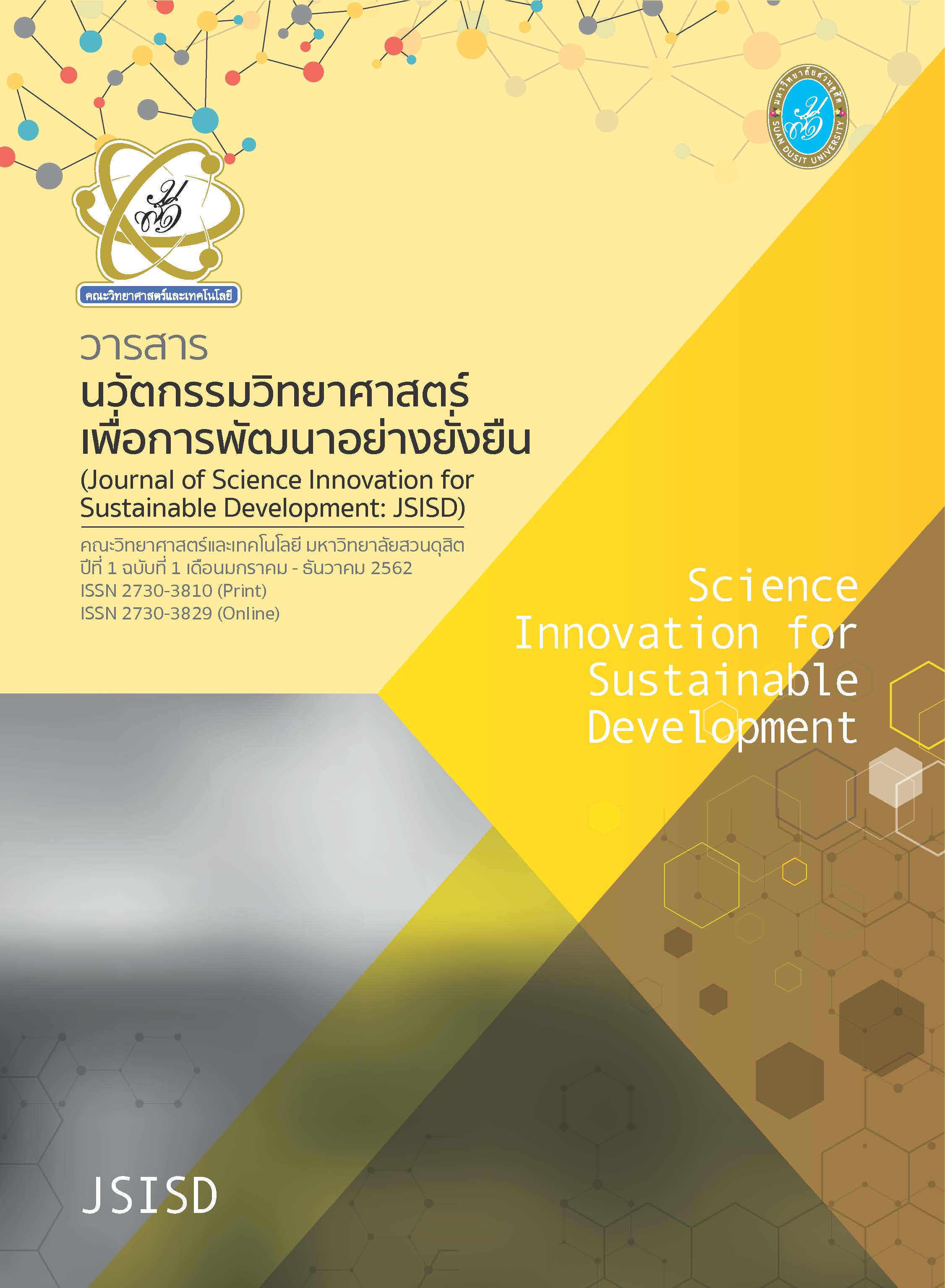การออกแบบและพัฒนาชุดการทดลอง เรื่อง การสั่นพ้องของคลื่นเสียงในท่อ โดยใช้ Arduino ขนิษฐา จออนันต์* และ กาญนภา กาญจนชาติ
Main Article Content
บทคัดย่อ
บทความนี้ได้นำเสนอการออกแบบและพัฒนาชุดทดลองการสั่นพ้องของคลื่นเสียงในท่อโดยใช้ Arduino โดยมีจุดประสงค์เพื่อออกแบบและพัฒนาชุดการทดลองการสั่นพ้องของคลื่นเสียงได้อย่างถูกต้องตรงตามทฤษฎีสำหรับการเรียนการสอนในเรื่อง การสั่นพ้องของคลื่นเสียง โดยชุดการทดลองดังกล่าวนี้ใช้ท่อพอลิไวนิลคลอไรด์ยาว 1.2 เมตร เป็นท่อปลายปิด สามารถปรับความยาวท่อได้โดยการเลื่อนระยะลูกสูบที่อยู่ภายในท่อ และใช้สมาร์ทโฟนที่ติดตั้งแอปพลิเคชั่น Function Generator เชื่อมต่อผ่านลำโพงบลูทูธ เป็นแหล่งกำเนิดเสียง โดยปล่อยความถี่เสียงตั้งแต่ 400, 500 และ 700 เฮิรตซ์ และใช้ Arduino เป็นเครื่องวัดค่าระยะ (x) เพื่อใช้คำนวณหาอัตราเร็วของเสียง จากผลการทดลองพบว่าค่าอัตราเร็วเสียงที่ได้มีค่าใกล้เคียงกับทฤษฎี โดยมีค่าความคลาดเคลื่อน 14.94 เปอร์เซนต์
Article Details

อนุญาตภายใต้เงื่อนไข Creative Commons Attribution-NonCommercial-NoDerivatives 4.0 International License.
ลิขสิทธิ์ต้นฉบับที่ได้รับการตีพิมพ์ในวารสารนวัตกรรมวิทยาศาสตร์เพื่อการพัฒนาอย่างยั่งยืนถือเป็นกรรมสิทธิ์ของคณะวิทยาศาสตร์และเทคโนโลยี มหาวิทยาลัยสวนดุสิต ห้ามผู้ใดนำข้อความทั้งหมดหรือบางส่วนไปพิมพ์ซ้ำ เว้นแต่จะได้รับอนุญาตอย่างเป็นลายลักษณ์อักษรจากคณะวิทยาศาสตร์และเทคโนโลยี มหาวิทยาลัยสวนดุสิต นอกจากนี้ เนื้อหาที่ปรากฎในบทความเป็นความรับผิดชอบของผู้เขียน ทั้งนี้ไม่รวมความผิดพลาดอันเกิดจากเทคนิคการพิมพ์
เอกสารอ้างอิง
กฤษณา กฤษณกาฬ, ณัฐกมล คำมา, และอุดมศักดิ์ กิจทวี. (2018). การออกแบบและสร้างชุดการทดลองการแทรกสอดของเสียงภายในท่อร่วมกับแอปพลิเคชันสมาร์ทโฟนเพื่อ ใช้ในการเรียนการสอน. กรุงเทพฯ: มหาวิทยาลัยสวนดุสิต.
ธวัชชัย นาคช่วย. (2561). การพัฒนาชุดทดลองการสั่นพ้องของเสียงโดยใช้สมาร์ทโฟน และท่อพอลิไวนิลคลอไรด์ (PVC). วารสารมหาวิทยาลัยทักษิณ, 21(3), 183-190.
ปรีณาพรรณ พิมพ์พิศาล และกัญจน์ชญา หงส์เลิศคงสกุล. (2557). การสร้างชุดทดลองหาค่าอัตราเร็วเสียงในของแข็งโดยวิธีการสั่นพ้องของคลื่นเสียง. วารสารวิทยาศาสตร์บูรพา, 1(6), 34-39.
วันธนา ศิลปวิลาวัณย์. (2552). ชุดการทดลองเพื่อแก้ไขแนวคิดที่คลาดเคลื่อนของเรื่องคลื่นเสียง. เชียงใหม่: มหาวิทยาลัยเชียงใหม่.
Intan Nurjannah at all. (2017). Sound Intensity Measuring Instrument Based on Arduino Board with Data Logger System. International Journal of Advanced Engineering Research and Science (IJAERS), 4(9), 27-35.


